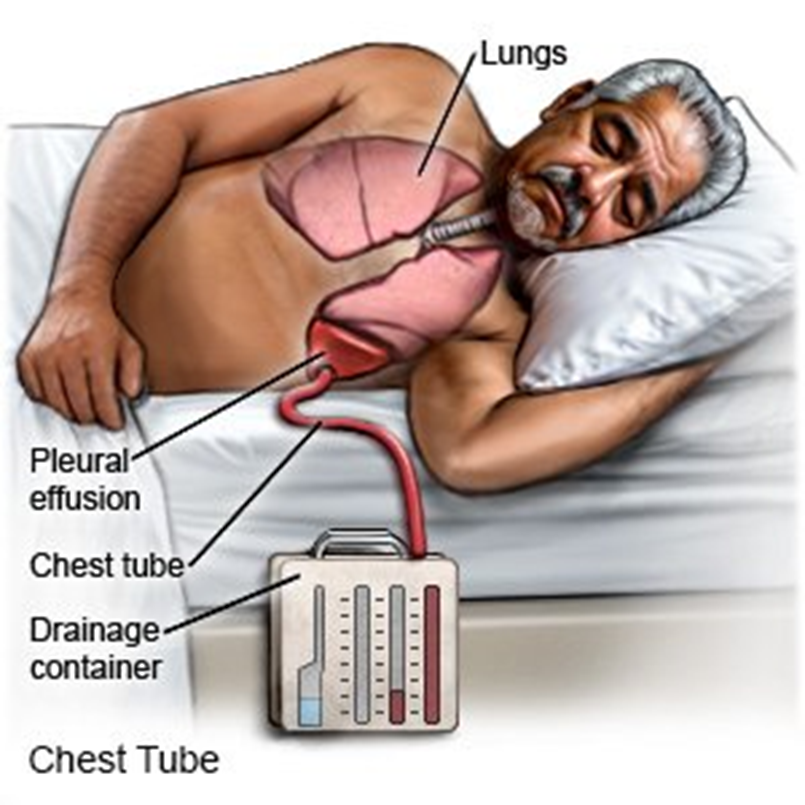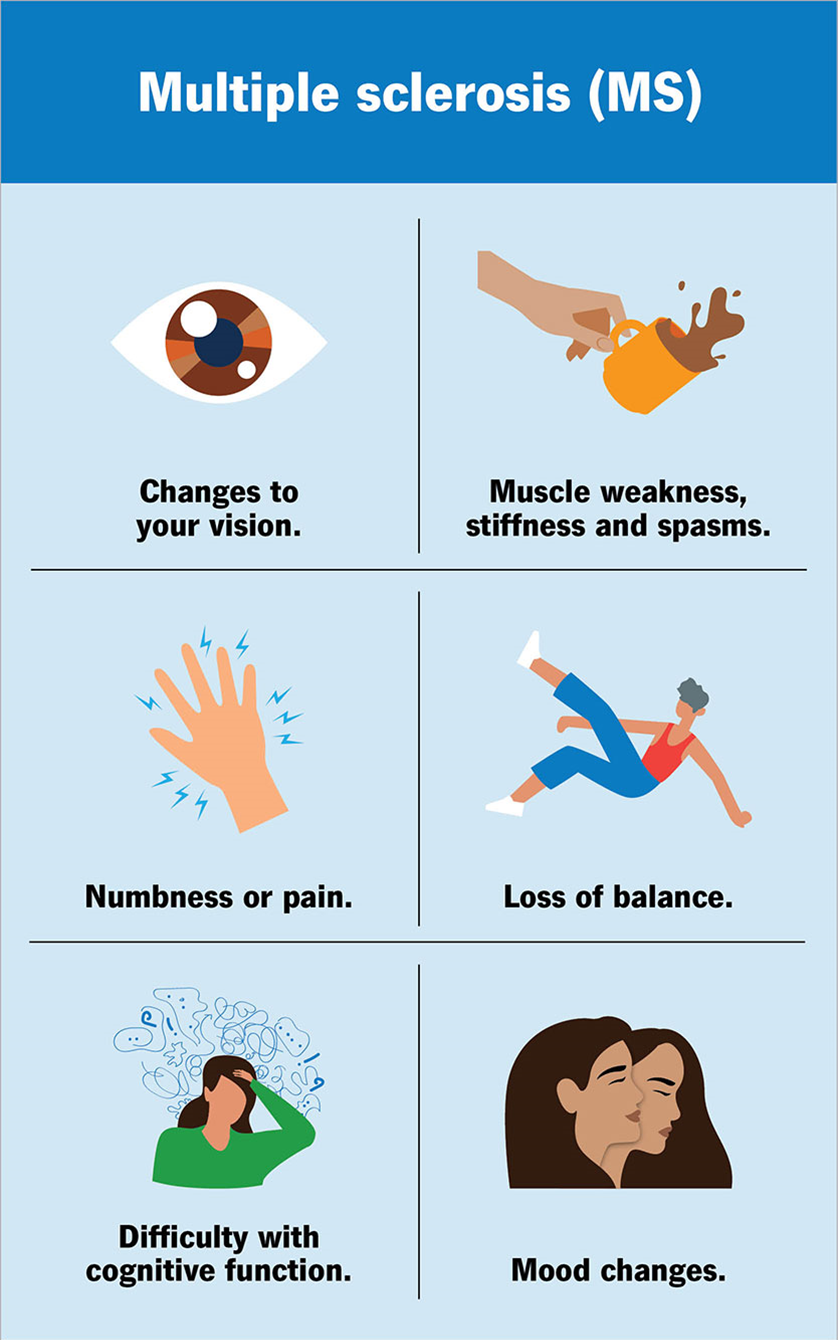The provider writes an order for a client to have a chest tube removed. Which of the following are appropriate reasons to discontinue a chest tube? Select all that apply.
Breath sounds diminished on auscultation.
Improved respiratory status.
Symmetrical rise and fall of the chest.
Oxygen saturation at least 90%.
Continuous bubbling in water seal chamber.
Chest is asymmetrical on inspiration and expiration.
Bilateral breath sounds clear on auscultation.
Correct Answer : B,C,G
Choice A Reason:
Breath sounds diminished on auscultation indicate that there may still be fluid or air in the pleural space, suggesting that the chest tube is still needed to drain the pleural cavity. This is not an appropriate reason to discontinue a chest tube as it indicates ongoing issues that need to be resolved.
Choice B Reason:
Improved respiratory status is a key indicator that the chest tube has successfully resolved the underlying issue, such as a pneumothorax or pleural effusion. When the patient shows signs of stable and improved breathing, it suggests that the chest tube has served its purpose and can be safely removed.

Choice C Reason:
Symmetrical rise and fall of the chest during respiration indicate that both lungs are expanding and contracting normally. This symmetry is a sign that the pleural space is no longer compromised, making it an appropriate reason to remove the chest tube.
Choice D Reason:
Oxygen saturation at least 90% is a general indicator of adequate oxygenation but does not specifically address the condition of the pleural space. While important, it is not a direct reason to discontinue a chest tube without other supporting signs.
Choice E Reason:
Continuous bubbling in the water seal chamber indicates an ongoing air leak, which means that the chest tube is still necessary to evacuate air from the pleural space. This is not an appropriate reason to remove the chest tube.
Choice F Reason:
An asymmetrical chest on inspiration and expiration suggests that there is still an issue with lung expansion, possibly due to fluid or air in the pleural space. This condition requires the chest tube to remain in place until resolved.
Choice G Reason:
Bilateral breath sounds clear on auscultation indicate that both lungs are free of fluid and air, and are functioning normally. This is a strong indicator that the chest tube has achieved its purpose and can be safely removed.
Nursing Test Bank
Naxlex Comprehensive Predictor Exams
Related Questions
Correct Answer is ["C","D","E"]
Explanation
Choice A Reason:
Provide continued sedation.
Providing continued sedation is not typically necessary after a cardioversion. The sedation used during the procedure is usually short-acting, and the client should begin to wake up shortly after the procedure is completed. Continuous sedation is not required unless there are specific medical reasons, which should be determined by the healthcare provider.
Choice B Reason:
Remove crash cart from the room.
The crash cart should remain in the room until the client is fully stable. Removing it immediately after the procedure is not advisable because the client may still be at risk for complications such as arrhythmias or other cardiac events. Keeping the crash cart nearby ensures that emergency equipment is readily available if needed.
Choice C Reason:
Assess the chest for burns.
Assessing the chest for burns is an important nursing action following a cardioversion. The electrical shock delivered during the procedure can cause burns on the skin where the electrodes were placed. It is essential to check for any signs of burns or skin irritation and provide appropriate care if needed.
Choice D Reason:
Ensure electrodes are in place for continued monitoring.
Ensuring that the electrodes are in place for continued monitoring is crucial. Continuous cardiac monitoring is necessary to observe the client’s heart rhythm and detect any potential complications or recurrence of arrhythmias. Proper placement and function of the electrodes are essential for accurate monitoring.
Choice E Reason:
Document results of the procedure.
Documenting the results of the procedure is a critical nursing action. Accurate documentation includes noting the client’s response to the cardioversion, any complications, and the current heart rhythm. This information is vital for ongoing care and communication with the healthcare team.
Correct Answer is A
Explanation
Choice A reason:
Baclofen is primarily used to treat muscle symptoms caused by multiple sclerosis, including muscle spasms, stiffness, and pain1. It acts on the spinal cord nerves to decrease the number and severity of muscle spasms, thereby improving muscle movement2. The effectiveness of baclofen in managing multiple sclerosis symptoms is best evaluated by assessing the reduction in muscle spasms.

Choice B reason:
While mood and affect are important aspects of a patient’s overall well-being, they are not the primary indicators of baclofen’s effectiveness. Baclofen does not have a direct impact on mood and affect, as its main function is to relieve muscle spasms and improve muscle movement.
Choice C reason:
Appetite is not a primary concern when evaluating the effectiveness of baclofen. This medication is not known to significantly affect appetite. The main therapeutic goal of baclofen is to reduce muscle spasms and improve mobility in patients with multiple sclerosis.
Choice D reason:
Sleep pattern, although important for overall health, is not the primary measure of baclofen’s effectiveness. Baclofen’s primary role is to alleviate muscle spasms and improve muscle function. While it may have some impact on sleep due to its muscle-relaxing properties, this is not the main criterion for evaluating its effectiveness.
Whether you are a student looking to ace your exams or a practicing nurse seeking to enhance your expertise , our nursing education contents will empower you with the confidence and competence to make a difference in the lives of patients and become a respected leader in the healthcare field.
Visit Naxlex, invest in your future and unlock endless possibilities with our unparalleled nursing education contents today
Report Wrong Answer on the Current Question
Do you disagree with the answer? If yes, what is your expected answer? Explain.
Kindly be descriptive with the issue you are facing.
